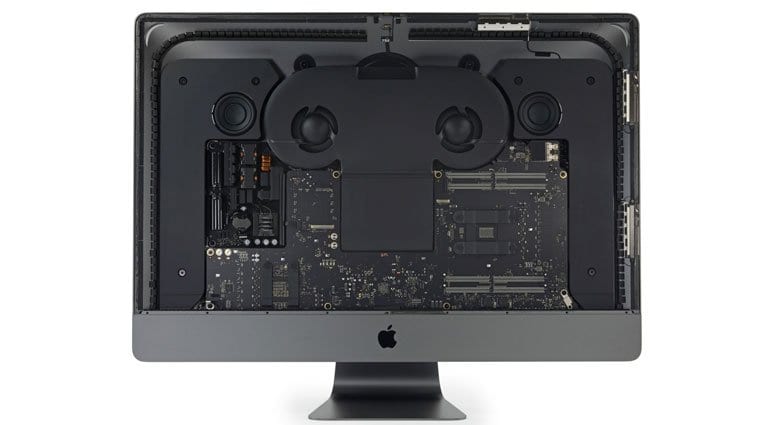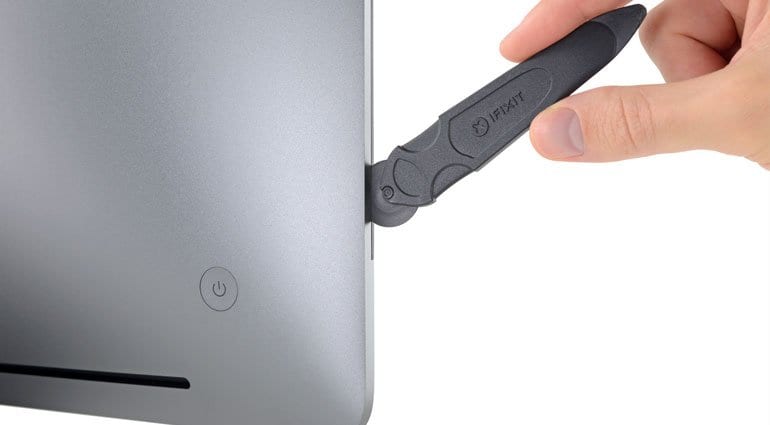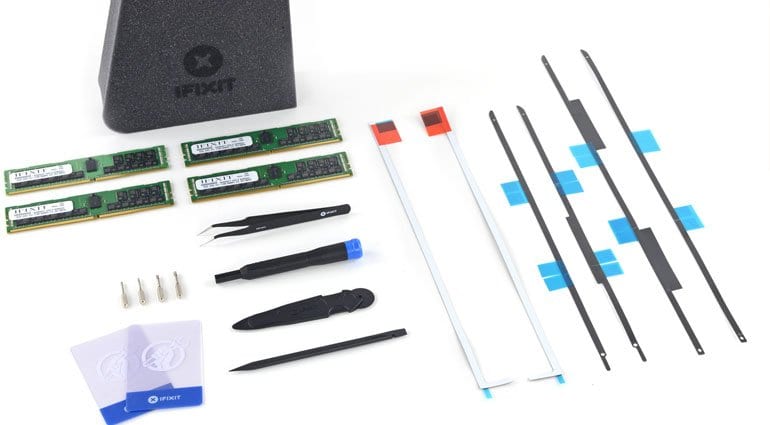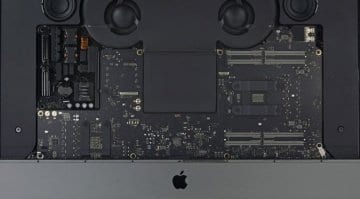Could the iMac Pro be user-upgradeable after all?
Apple recently released their amazingly powerful and gorgeous iMac Pro. Amongst the gasps and declarations of beauty there was a fair bit of disquiet when it became apparent that there was no access to the RAM, CPU or drives for upgrade or repair. Once you’ve bought the iMac Pro you are stuck with your chosen specification. That’s ok for a consumer device but this was aimed at professionals and creators and so flexibility and future proofing are a bit more important. However, according to a teardown by iFixit.com, some upgrades made indeed be possible if you don’t mind breaking the warranty.
iMac Pro Teardown
It’s quite frightening to take a screwdriver to those fabulously smooth lines of a $5000 Apple device, but someone’s got to do it. iFixit got hold of an 8-core 3.2GHz iMac Pro, with 32GB RAM, 1TB SSD storage and AMD Radeon pro Vega 56 all built into a lovely 27″ 5120×2880 resolution display. And they simply, and very carefully, pulled it apart. Although you don’t start with a screwdriver, you start with a pizza cutter.
Nothing is instantly accessible and unlike previous versions there’s not even an access hatch for the RAM. However, once you’ve got the board out the memory sits there in regular 288-pin RAM slots and can be easily replaced. This, of course, can be made even easier with the handy iFixit iMac Pro Memory Maxxer RAM Upgrade Kit.
The SSD drives are slightly different and more complicated. They are PCIE-based NVMe SSD drives containing SanDisk flash storage. Some commenters suggest they are just raw flash chips in a frame rather than regular SSD drives which seems to account for the lack of SSD controller. These are custom made by Apple and although they are accessible and can be removed they would be difficult to replace. There may also be security systems and encryption tied to the ID of the drives meaning that MacOS wouldn’t boot with an alternative SSD.
The CPU, on the other hand, is in a regular processor socket, not soldered to the board as in some other devices, and so can be replaced without any bother.
The graphics, however, is soldered to the board and so that’s not going to be something that can be changed. Not great for a professional solution.
Worth the risk?
Upgrading the memory does appear to be something that could be undertaken down the line to give your iMac Pro a bit more life. Storage is probably better taken care of with external drives connected via Thunderbolt. A processor upgrade is also a viable possibility but is always going to be expensive to push the system much further than you started with. None of this is going to impress Apple if you end up bricking your iMac Pro. So, obviously, proceed at your own risk.
More information
- iFixit iMac Pro teardown.
5 responses to “Could the iMac Pro be user-upgradeable after all?”

You are currently viewing a placeholder content from Facebook. To access the actual content, click the button below. Please note that doing so will share data with third-party providers.
More InformationYou are currently viewing a placeholder content from Instagram. To access the actual content, click the button below. Please note that doing so will share data with third-party providers.
More InformationYou are currently viewing a placeholder content from X. To access the actual content, click the button below. Please note that doing so will share data with third-party providers.
More Information









Just by Windows already.
The iMac Pro has a 32GB of powerful RAM and also has an 8 core processor which is enough for the user. So thinking about this particular thing, Apple is not allowing the users to upgrade and repair these RAM, CPU, drives or any other parts of this iMac Pro.
The iMac Pro has a 32GB of powerful RAM and also has an 8 core processor which is enough for the user. So thinking about this particular thing, Apple is not allowing the users to upgrade and repair these RAM, CPU, drives or any other parts of this iMac Pro.
I like it
The technology has been changing due to modern world. Thanks for Sharing this platform.